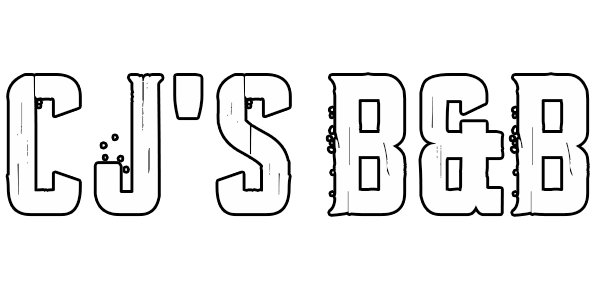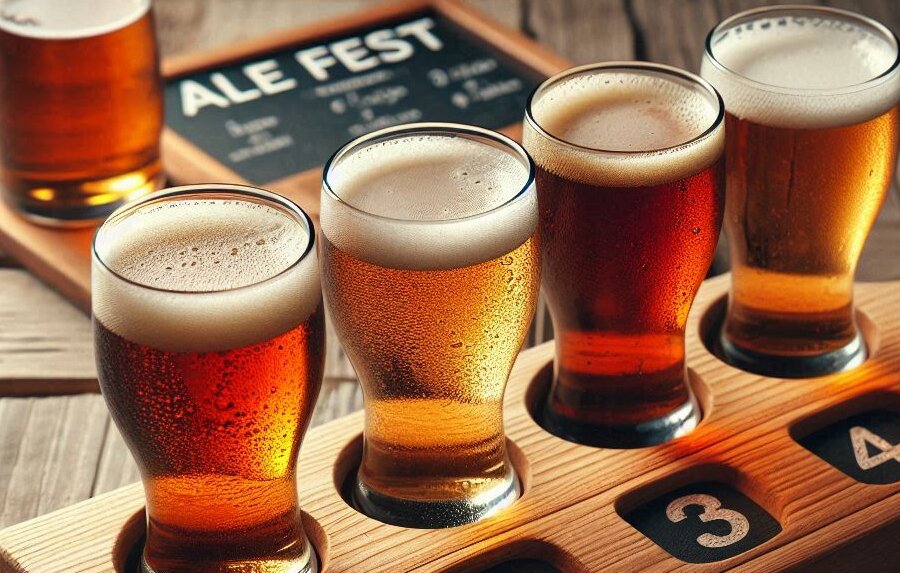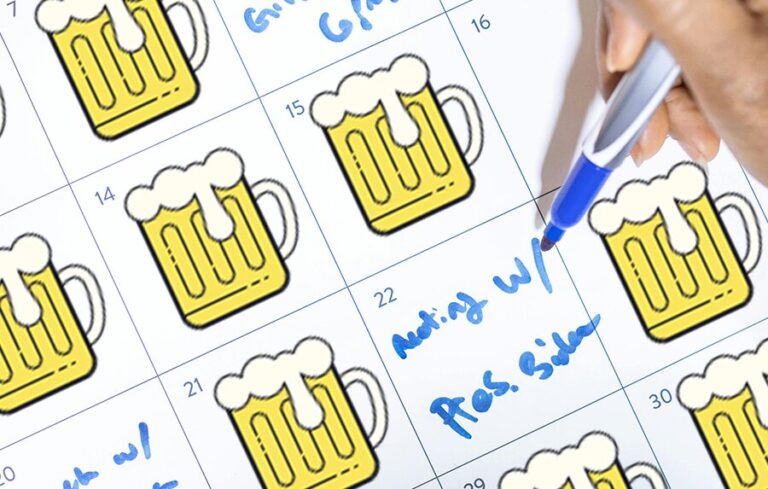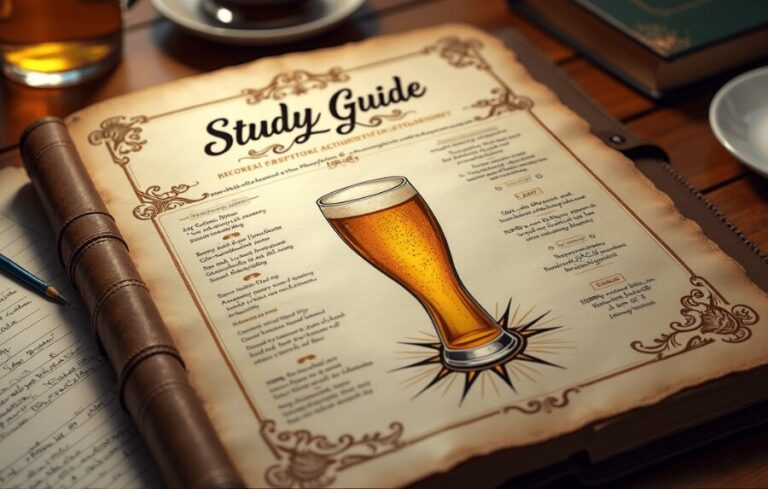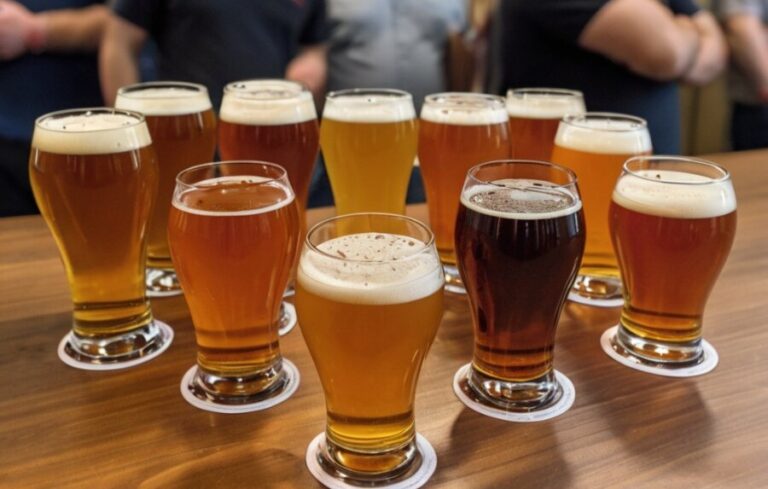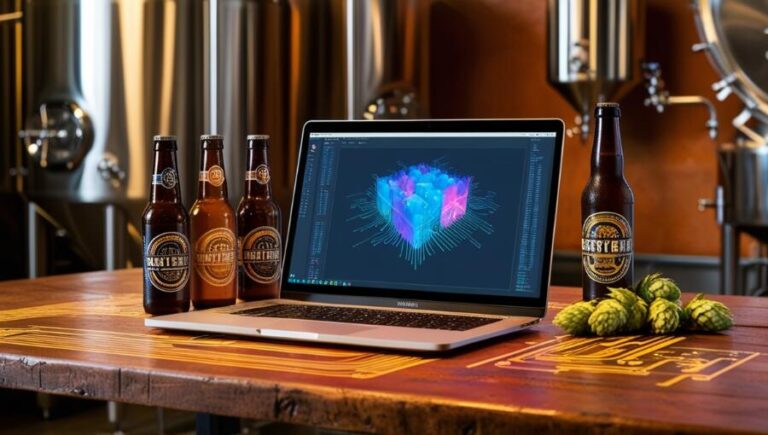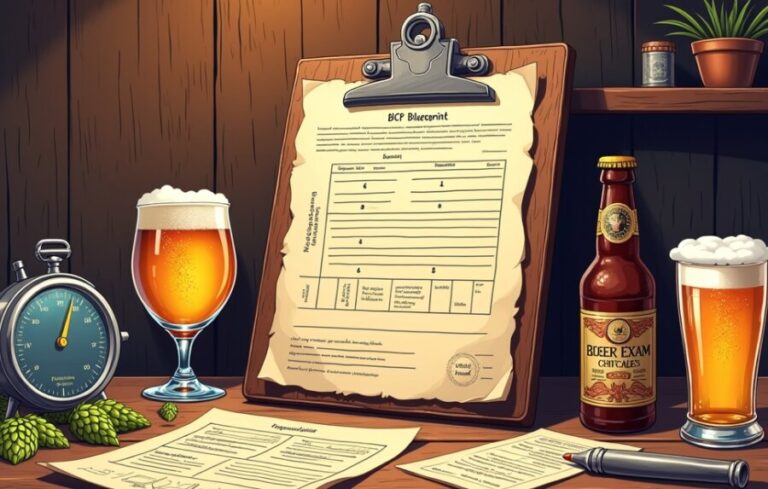Our evaluations and product assessments are conducted using a thorough and unbiased approach. Should you choose to buy any items through our provided links, we might receive a commission Read our disclosures.
Homebrew Competition Overview
What’s the Buzz About Homebrew Competitions?
Homebrew competitions are where amateur brewers get to show off their homemade beers and get some solid feedback from seasoned judges. These events usually have different categories based on beer styles, so you can compete in the one that best shows off your brewing chops. It’s always a blast to see how each brewer puts their own spin on different styles and the creativity that comes through. Being familiar with the homebrew competition rules will give you an edge over your competition.
When I first thought about entering a competition, I found out that the judges know their stuff about beer styles and brewing techniques. They rate the beers on things like appearance, aroma, flavour, and overall quality. The scoring rules are laid out clearly for everyone, making sure the judging is fair. If you’re looking to jump into a competition, check out homebrew competitions near me.
| Key Parts of Homebrew Competitions | What’s It About? |
|---|---|
| Categories | Different beer styles to compete in. |
| Judging | Judges score based on looks, smell, taste, and quality. |
| Recognition | Winners get prizes or a pat on the back for their brews. |
Why Bother with Homebrew Competitions?
Joining homebrew competitions can be super rewarding. These events give brewers a stage to show off their craft and build a community with other homebrew fans. For me, it’s always been inspiring to meet others who love brewing as much as I do.
Competitions also give brewers a chance to get helpful feedback from judges, which can really help improve brewing techniques and recipes. This feedback is gold for fine-tuning skills and making better brews in the future. Plus, winning awards or prizes can be a big motivator and a nice recognition of all the hard work. If you want some tips to up your game, check out homebrew competition tips.
The rules for these competitions, including legal stuff, are key to making sure everything runs smoothly. Organizers need to get the right permits and make sure everyone is of legal drinking age, which keeps things safe for everyone (Colonel Beer).
By jumping into homebrew competitions, I’ve found not just a place to show off my brewing skills but also a community that helps me grow and celebrates the art of homebrewing.
Rules and Regulations
Jumping into homebrew competitions is a blast, but you gotta know the rules. Here’s the lowdown on the legal stuff and guidelines for sharing your brews.
Legal Stuff for Homebrew Competitions
When I dive into hosting or entering a homebrew competition, there are some legal hoops to jump through. Organizers need to play by the rules at every level—local, state, and federal. Here’s what you need to keep an eye on:
| Requirement | What You Need to Know |
|---|---|
| Permits | Get the right permits for your event. This changes depending on where you are. |
| Legal Drinking Age | Make sure everyone drinking or judging is of legal age. |
| Alcohol Limits | Know the limits on alcohol content, ingredients, or brewing methods. |
| Consumption Rules | Follow the rules about drinking at the event. |
Organizers need to nail these legal points to keep things smooth and legit. For more details, check out the guidelines from Colonel Beer.
Sharing Your Brews
Sharing your homebrew at competitions comes with its own set of rules. Here’s what I do to keep things on track:
- Distribution Permits: Make sure you have the right permits if you’re serving alcohol.
- Sampling Rules: Set clear rules on how samples will be given out to judges and attendees.
- Responsible Drinking: Promote responsible drinking among everyone there.
- Event Venue: Ensure the venue follows local laws about alcohol.
By sticking to these guidelines, I help make the event safe and fun for everyone. Knowing the legal stuff and how to share your brews is key to a great homebrew competition. Want more tips? Check out our homebrew competition tips.
Judging Criteria
Entering a homebrew competition? Knowing what the judges are after is a game-changer. These criteria not only guide you on what to focus on but also ensure a fair shake for everyone.
What Judges Look For
Homebrew competitions usually boil down to five main categories:
- Aroma
- Appearance
- Flavour
- Mouthfeel
- Overall Impression
Judges, who are often seasoned brewers or beer aficionados, use these categories to give each beer a thorough once-over. They follow a standardized scoring system to keep things fair and square (Colonel Beer).
Here’s a quick rundown of what each category entails:
| Category | What It Means |
|---|---|
| Aroma | The beer’s scent, including hops, malts, and yeast. |
| Appearance | How it looks—color, clarity, and head retention. |
| Flavour | The taste—sweetness, bitterness, and balance. |
| Mouthfeel | The texture and body, including carbonation. |
| Overall Impression | The judge’s overall take on the beer. |
How Scoring Works
The scoring system in homebrew competitions is designed to be straightforward. Points are awarded in each category, and the total score decides the winner. Here’s a peek at how the scoring usually breaks down:
| Category | Score Range |
|---|---|
| Aroma | 0 – 10 |
| Appearance | 0 – 10 |
| Flavour | 0 – 20 |
| Mouthfeel | 0 – 5 |
| Overall Impression | 0 – 10 |
| Total | 0 – 55 |
Judges rate each category on a scale, often from 1 to 10, with higher scores meaning better quality. They also jot down comments, giving you a clear picture of what you nailed and what needs work. For more details, check out our homebrew competition tips.
Knowing these criteria can really up your game. It helps you fine-tune your brewing skills and zero in on what judges care about most.
BJCP Style Guidelines
What Are BJCP Guidelines?
The Beer Judge Certification Program (BJCP) Style Guidelines are a must-have for anyone diving into homebrew competitions. These rules are the gold standard, helping folks judge and categorize different beer styles. They’re based on top-notch commercial examples and even some old-school styles that aren’t brewed anymore (American Homebrewers Association).
These guidelines do a few things:
- Help judges score beers in competitions.
- Teach brewers what makes each beer style unique.
- Keep brewing consistent by setting a standard.
Here’s a quick look at what’s in the BJCP Style Guidelines:
| Component | Description |
|---|---|
| Style Name | The name of the beer style (e.g., IPA, Stout) |
| Aroma | What it smells like |
| Appearance | Color, clarity, and how the head holds up |
| Flavour | Taste, including sweetness, bitterness, and other flavours |
| Mouthfeel | How it feels in your mouth |
| Overall Impression | General thoughts about the beer style |
Why Do Guidelines Matter in Competitions?
The BJCP Style Guidelines are a big deal in homebrew competitions. They give everyone a common way to judge beers, making sure things are fair and consistent. Without these rules, judging would be a mess because there’d be no standard to follow (American Homebrewers Association).
These guidelines also help connect homebrewers and judges. They spell out what each style should be like, so brewers can make sure their beers fit the right category. For example, if I’m brewing a stout, I’d check the BJCP guidelines to make sure my beer matches what’s expected for that style.
Some pro brewers might think these rules are a bit tight, but they’re really just about categorizing what’s being brewed now and what’s been brewed in the past. This is based on a bunch of top-notch examples and the traits that make these beers taste great (American Homebrewers Association).
If you’re thinking about entering a competition, knowing these guidelines is key. They’ll help you get your beer ready and figure out which category to enter. For more tips, check out our article on homebrew competition tips to get the inside scoop on brewing and entering your beer.
Organizing a Homebrew Competition
Planning a homebrew competition is a thrilling adventure. I love diving into the details and making sure everything clicks on the big day. Here’s a peek at the key roles and the timeline I usually follow to pull off a fantastic event.
Key Roles in Competition Organization
To get a homebrew competition off the ground, you need a solid team. Each person plays a crucial part in making sure things run like clockwork. Here are the main roles:
| Role | Responsibilities |
|---|---|
| Event Coordinator | Registers the event with the BJCP and AHA, manages competition software, oversees materials, labels, and medals, and keeps everyone in the loop. (American Homebrewers Association) |
| Judge Coordinator | Rounds up judges, makes sure they know the judging criteria, and keeps them organized. |
| Sponsorship Coordinator | Finds sponsors, manages relationships, and helps fund the event and prizes. |
| Data Entry Personnel | Logs competition entries into the system and keeps records straight. |
| Cellar Staff | Handles the storage and organization of the entries, making sure each beer is cold and labeled right. |
| Head Steward | Oversees the judging process, ensures judges have what they need, and keeps things running smoothly. |
Having dedicated folks in these roles can make a world of difference for everyone involved.
Timeline for Competition Planning
Organizing a homebrew competition usually takes a few months. Here’s how I break down the tasks:
| Timeframe | Tasks |
|---|---|
| 3-4 Months Before | Lock in sponsors, set up the competition website, register the event with the BJCP and AHA, and recruit key personnel. (American Homebrewers Association) |
| 1-2 Months Before | Finalize judging panels, confirm sponsorships, start promoting the event, and set up competition software. |
| 1 Week Before | Confirm all logistics, ensure all materials are ready, communicate with judges and volunteers, and finalize participant entries. |
| Day of Competition | Set up the venue, manage check-in for participants, ensure judges have what they need, and oversee the event. |
| 1 Week After | Gather feedback, evaluate the competition, announce winners, and hand out prizes. |
Good planning and execution are key to a successful event. By sticking to this timeline and assigning the right roles, I can create a fun and smooth experience for everyone. For more tips on running a successful competition, check out my homebrew competition tips.

